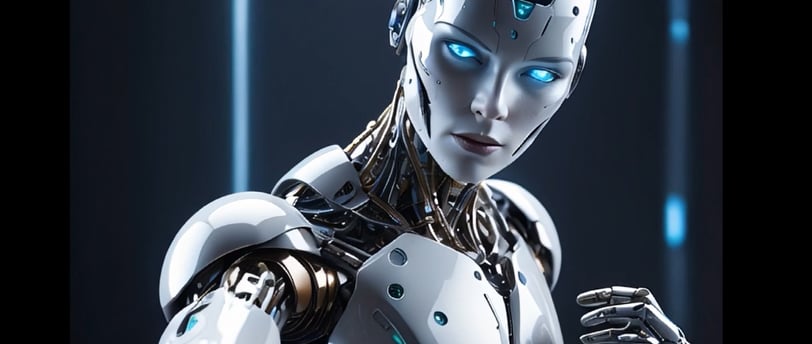how AI got started and what the future might hold
In summary, AI has come a long way from Turing’s early questions and the Dartmouth workshop. Its journey is marked by breakthroughs, setbacks, and exponential progress. The future holds exciting possibilities but also challenges that will require careful navigation.
aj
4/5/20253 min read


How AI Got Started and What the Future Holds
Artificial Intelligence (AI) has its roots in the mid-20th century, but the idea stretches back even further. The concept of creating machines that can "think" dates to ancient myths of automata. However, the modern foundation of AI began with the rise of computing.
In 1950, Alan Turing, a British mathematician, published the landmark paper “Computing Machinery and Intelligence,” where he posed the famous question: “Can machines think?” He proposed the Turing Test as a way to measure a machine’s ability to exhibit human-like intelligence. This set the philosophical and technical tone for future AI research.
The term “Artificial Intelligence” was coined in 1956 at the Dartmouth Conference, organized by John McCarthy, Marvin Minsky, Nathaniel Rochester, and Claude Shannon. Their goal was ambitious: to figure out how to make machines use language, form abstractions, and solve problems usually requiring human intelligence. Early programs like the Logic Theorist (1956) and ELIZA (1966) showed that computers could perform reasoning and mimic simple conversations, though in limited ways.
Progress in AI came in waves. The 1970s and 1980s saw periods of optimism followed by setbacks, known as “AI winters,” due to slow hardware and overestimated promises. Despite these lulls, AI research pushed forward, giving rise to expert systems in the 1980s, which helped businesses make decisions using encoded human expertise.
A major turning point arrived in the late 1990s and early 2000s, when increased computational power, larger datasets, and improved algorithms gave AI a second wind. IBM’s Deep Blue defeated world chess champion Garry Kasparov in 1997, signaling AI’s growing potential.
The 2010s marked a revolution with the rise of machine learning (ML) and, more specifically, deep learning. Powered by neural networks inspired by the human brain, deep learning enabled significant breakthroughs in image recognition, natural language processing (NLP), and robotics. AI systems like Google’s AlphaGo shocked the world in 2016 by defeating the world champion of the complex board game Go, something previously thought to be decades away.
Today, AI is everywhere. From voice assistants like Siri and Alexa to self-driving cars, recommendation systems on Netflix, chatbots, and advanced medical diagnostics, AI has moved from labs into daily life. Tools like OpenAI’s ChatGPT have demonstrated that AI can now generate human-like text and code, opening up new possibilities across industries.
-The Future of AI
Looking ahead, AI is expected to become even more embedded in society. Here are a few key trends shaping the future:
1. General AI vs. Narrow AI: Current AI is "narrow," meaning it excels at specific tasks like language translation or image recognition. The pursuit of Artificial General Intelligence (AGI)—AI that can perform a wide range of tasks at human-level or beyond—is ongoing. While AGI is still theoretical, many believe advances in machine learning and computational neuroscience could make it a reality within decades.
2. AI and Automation: AI will continue transforming industries, from automating repetitive office tasks to enabling smart factories and autonomous vehicles. This shift will likely increase productivity but also raise concerns about job displacement and the need for workforce reskilling.
3. AI and Ethics: As AI grows more powerful, ethical concerns around privacy, bias, transparency, and control are becoming central topics. Governments and organizations are working on creating regulations and frameworks to ensure AI is developed responsibly.
4. AI in Healthcare: AI is poised to revolutionize medicine. From early disease detection using medical imaging to personalized treatment plans based on genetic data, AI could lead to significant advances in patient care and public health.
5. Human-AI Collaboration: Rather than replacing humans, the future of AI will likely focus on collaboration. AI-powered tools will enhance human decision-making, creativity, and productivity. Fields like education, design, and research will see AI as a partner rather than a competitor.
6. Continued Breakthroughs: Emerging areas like quantum computing and neuromorphic chips could supercharge AI’s capabilities. Advances in explainable AI (making AI’s decision-making understandable) and energy-efficient models will also be crucial for sustainable growth.
